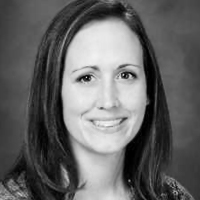For anyone who is working in skilled nursing facilities, we know that it can be a daunting, but also a very rewarding experience. This course will describe the roles of the key interdisciplinary team members. We will review and discuss medical complexities affecting clinical decision making for our Medicare beneficiaries in skilled nursing. Additionally, this course will provide guidance on creating treatment plans and goal building to support reimbursement of services.
Learning Outcomes
Course objectives include discussing the roles of key interdisciplinary team members, explaining medical complexities and describing how to build strong and reimbursable treatment plans.
OBRA 1987
How did we get to where we are currently in the skilled nursing facility world? The way things are done currently began as a result of the Omnibus Budget Reconciliation Act of 1987. As part of this act, there is a dramatic change in the way that skilled nursing facilities approach resident care and it radically modified nursing home regulations and the survey process. It is important to review this with SLPs because we are part of the interdisciplinary team that is included within this act. We know that oftentimes departments in skilled nursing facilities can be ‘siloed’. It’s important to have a voice in this process as well. As a part of this act, the federal government established a requirement for comprehensive assessment as a foundation for planning and delivering care to nursing home residents.
Furthermore, it mandated that facilities “provide necessary care and services to help each resident attain or maintain their highest practicable, physical, mental, and psychosocial well-being.” With that statement, you can clearly see how the rehab team can be crucial in making that happen. The act goes on to say to “ensure that the resident obtained optimal improvement and does not deteriorate within the limits of their right to refuse treatment and within the recognized pathology of the normal aging process” (Code of Federal Regulations [CFR] Title 42, Part 483.25). This is so important to be cognizant of because oftentimes we may not receive specific referrals for skilled care due to the fact that team members may think, "You know, that's just part of their disease process," which will be addressed later when we talk about medical complexities and comorbidities in more detail.
Teamwork
What's going to work? Teamwork is working together as an interdisciplinary team. To delve a bit further into this idea of “team”, ASHA is moving beyond the concept of an interdisciplinary team into interprofessional practice and interprofessional education, where the team has a greater understanding of everybody's roles, responsibilities, scope of practice and how we can work together in order to meet the patient’s needs. The patient and their family is at the center of that interdisciplinary team and we work together to help them attain and maintain their highest level of well-being.
Key Facility IDT Members
Who are some of the key interdisciplinary team (IDT) members? There are administrators and owners. You may be in a skilled nursing facility where you are “in-house” in that you are employed by the same individuals as the other employees in the building or you could be a contract therapy provider.
Other key members include the therapy providers - physical therapy, occupational therapy and speech language pathology. There are also physical therapy assistants and occupational therapy assistants. Currently, Medicare does not recognize the services of SLPAs as providers. It's not likely that they will be part of your team unless they are employed as a rehab technician.
There are also various layers of the nursing team. Most facilities will have a Director of Nursing (DON), at least one registered nurse (RN) as required for the MDS process, and licensed practical nurses (LPNs). There will be charge nurses on the units, nurses that administer medications and certified nursing assistants (CNAs). I always say that the CNAs are the eyes and ears of the facility because they have the most contact with the residents and work closely with them on their activities of daily living (ADLs). I always say it is mutually beneficial to become friends with CNAs and get them on our team because they are typically the folks that can pick up on functional changes in the residents sooner than anybody else. Oftentimes we need to provide CNAs with some specific education so that they understand what the changes look like.

